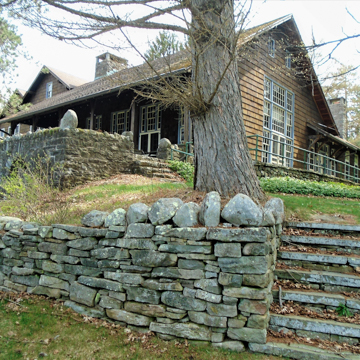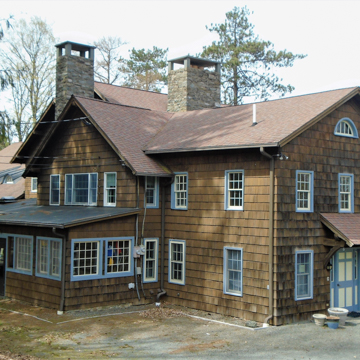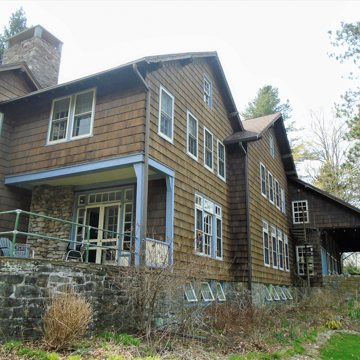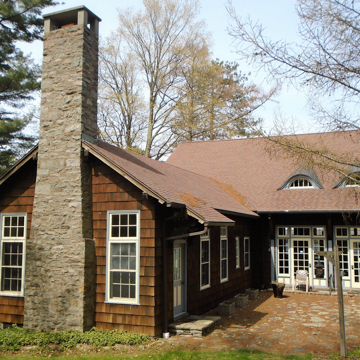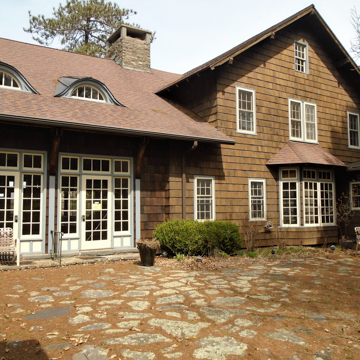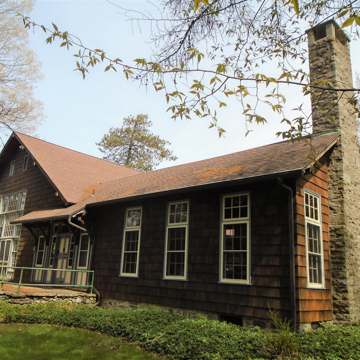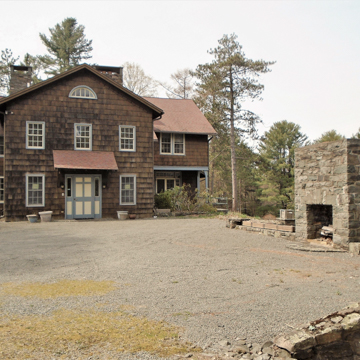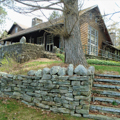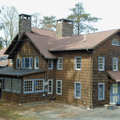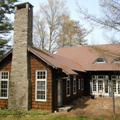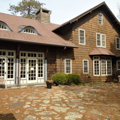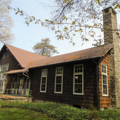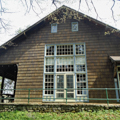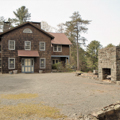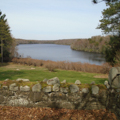Lake Paupac was acquired by J. W. Mott, the owner of Atlantic City's fabled Traymore Hotel. He commissioned the successor firm of the Traymore's architects to build a sprawling, rustic camp with massive stone fireplaces and long banks of small-paned sash windows looking out on his lake. Visiting the Motts in the 1930s, Robert Venturi recalled seeing a now lost watercolor of the Traymore over the mantelpiece. When the Motts sold the property, a group of Philadelphians acquired the lake and its perimeter to form an association. Most of the house was kept as a clubhouse and the new owners commissioned small cottages by some of Philadelphia's most adventurous early modern architects. By setting the houses back from the lake, the area retains its pristine quality. The wooded sites are best seen in the winter or early spring.
You are here
Lake Paupac
If SAH Archipedia has been useful to you, please consider supporting it.
SAH Archipedia tells the story of the United States through its buildings, landscapes, and cities. This freely available resource empowers the public with authoritative knowledge that deepens their understanding and appreciation of the built environment. But the Society of Architectural Historians, which created SAH Archipedia with University of Virginia Press, needs your support to maintain the high-caliber research, writing, photography, cartography, editing, design, and programming that make SAH Archipedia a trusted online resource available to all who value the history of place, heritage tourism, and learning.









